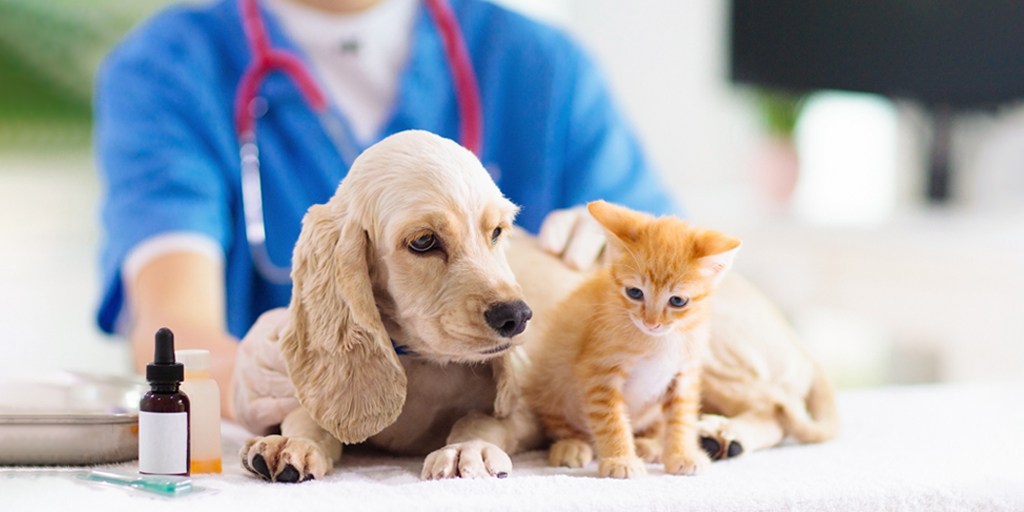How Much Does Pet Insurance Cost?
Pet insurance provides valuable protection against unexpected veterinary expenses, but the cost can vary significantly based on several factors.

Pet insurance provides valuable protection against unexpected veterinary expenses, but the cost can vary significantly based on several factors. Understanding how much pet insurance costs and what influences these costs is crucial for pet owners looking to budget effectively. This article will explore the various factors that impact pet insurance costs, provide average cost estimates, and offer tips on how to manage and potentially reduce these expenses.
Factors Influencing Pet Insurance Costs
Type of Coverage
The type of coverage you choose is a primary factor affecting the cost of pet insurance. Accident-only plans generally have lower premiums, as they cover only injuries resulting from accidents and not illnesses. In contrast, comprehensive plans cover both accidents and illnesses, providing broader protection but typically at a higher cost. For example, a basic accident-only policy might cost $20 to $30 per month, while a comprehensive policy could range from $40 to $70 or more.
Pet’s Age
The age of your pet significantly influences insurance premiums. Younger pets are generally less expensive to insure because they are less likely to develop health issues. As pets age, their risk of developing illnesses increases, leading to higher premiums. For instance, insuring a puppy might cost $25 per month, whereas insuring a senior dog could cost $50 per month or more.
Pet’s Breed
Certain breeds are more prone to specific health conditions, which can affect insurance costs. High-risk breeds, such as Bulldogs or Dachshunds, often have higher premiums due to their predisposition to genetic disorders or chronic conditions. For example, insurance for a French Bulldog might cost more compared to a mixed-breed dog with fewer known health issues.
Location
Geographic location plays a role in determining insurance costs. Veterinary care costs vary by region, and insurance companies adjust their premiums accordingly. In urban areas with higher veterinary costs, premiums may be higher compared to rural areas. For example, pet insurance in New York City might be more expensive than in a smaller town due to higher overall medical costs.
Deductibles and Co-pays
Deductibles and co-pays directly impact the cost of pet insurance. Deductibles are the amount you must pay out-of-pocket before insurance starts covering expenses, while co-pays are the percentage of the bill you pay after coverage kicks in. Choosing a higher deductible can lower your monthly premium, but it also means higher out-of-pocket costs when you make a claim. For example, opting for a $500 deductible might reduce your monthly premium compared to a $200 deductible.
Pre-existing Conditions
Insurance companies typically do not cover pre-existing conditions, which are health issues that existed before you purchased the policy. If your pet has a pre-existing condition, you may face higher costs for coverage or be unable to obtain coverage for that condition. Some insurers offer policies with limited coverage for pre-existing conditions or have options to cover new conditions that arise after policy inception.
Average Costs of Pet Insurance
Cats vs. Dogs
On average, pet insurance costs more for dogs than for cats. This is because dogs tend to have higher medical expenses due to their size, breed, and activity level. For example, the average monthly premium for a dog might range from $40 to $70, while for a cat, it might range from $20 to $40.
Accident-Only vs. Comprehensive Plans
Accident-only plans are more affordable, with average premiums ranging from $20 to $30 per month for both cats and dogs. Comprehensive plans, which cover both accidents and illnesses, generally cost more, with premiums ranging from $40 to $70 per month for dogs and $30 to $50 per month for cats.
Monthly Premiums
Monthly premiums vary widely based on factors such as pet age, breed, and location. On average, pet insurance premiums range from $25 to $70 per month. Younger and healthier pets will have lower premiums, while older pets and high-risk breeds will incur higher costs.
Annual Costs
The annual cost of pet insurance is simply the monthly premium multiplied by 12. For example, if you pay $50 per month, your annual cost would be $600. It’s essential to factor in this cost when budgeting for pet care.
Case Studies and Examples
Case Study 1: Young, Healthy Dog
A 2-year-old Labrador Retriever with no known health issues might have a monthly premium of around $30 to $50 for a comprehensive plan. This is relatively affordable compared to older dogs or those with breed-specific health risks.
Case Study 2: Older Cat
An 8-year-old domestic cat with a history of minor health issues might face a premium of $40 to $60 per month. The higher cost reflects the increased risk of age-related health problems.
Case Study 3: High-Risk Breed
A French Bulldog, known for its breed-specific health issues, might have a monthly premium of $50 to $70. This higher cost accounts for the breed’s propensity for respiratory and joint problems.
Additional Costs and Considerations
Annual Limits and Coverage Limits
Policies often have annual or per-incident limits, which cap the amount the insurance will pay. These limits can affect overall costs, especially if your pet requires extensive treatment. Higher limits generally mean higher premiums but provide more coverage.
Additional Benefits and Riders
Adding extra benefits or riders, such as wellness coverage or dental care, can increase your premium. While these additional features provide more comprehensive care, they also add to the overall cost.
Discounts and Promotions
Many insurance providers offer discounts for multiple pets, annual payments, or good preventive care. Taking advantage of these discounts can help reduce your overall insurance costs.
How to Save on Pet Insurance
Choosing the Right Plan
Selecting a plan that aligns with your pet’s needs and your budget is crucial. Consider factors such as coverage type, deductible amounts, and co-pays to find a balance between cost and coverage.
Increasing Deductibles
Opting for a higher deductible can lower your monthly premium. However, ensure you can afford the higher out-of-pocket costs when making a claim.
Bundling Policies
Some insurance companies offer discounts if you bundle pet insurance with other types of insurance, such as home or auto insurance.
Comparing Quotes
Obtaining quotes from multiple insurance providers allows you to compare costs and coverage options. This comparison helps ensure you’re getting the best value for your money.
Final Thoughts
Understanding the cost of pet insurance and the factors influencing it is essential for effective budgeting and ensuring adequate coverage for your pet. By considering factors such as coverage type, pet age, breed, and location, you can better manage and potentially reduce insurance costs. Evaluating different plans and taking advantage of discounts can help you find the right balance between cost and coverage, ultimately providing the best protection for your furry companion.
FAQ:
1. What factors determine the cost of pet insurance? Pet insurance costs are influenced by several factors, including the type of coverage (accident-only vs. comprehensive), your pet’s age, breed, location, and the chosen deductible and co-pays.
2. How does the type of coverage affect pet insurance costs? Accident-only plans are generally cheaper than comprehensive plans. Comprehensive plans, which cover both accidents and illnesses, usually come with higher premiums due to broader coverage.
3. Why does my pet’s age impact the insurance premium? Older pets are more likely to develop health issues, which increases the risk for insurers. As a result, premiums are higher for older pets compared to younger ones.
4. How does my pet’s breed influence insurance costs? Certain breeds are prone to specific health conditions. High-risk breeds often have higher premiums due to their increased likelihood of requiring medical treatment.
5. Does the location where I live affect pet insurance rates? Yes, geographic location affects insurance costs due to varying veterinary care prices. Urban areas with higher vet costs typically have higher insurance premiums.
6. What role do deductibles and co-pays play in determining insurance costs? Higher deductibles generally lower monthly premiums, while lower deductibles increase them. Co-pays, which are the percentage of the bill you pay after coverage, also impact overall costs.
7. Are pre-existing conditions covered by pet insurance? Most pet insurance policies do not cover pre-existing conditions. This means any health issues your pet had before purchasing the policy will not be covered.
8. What is the average cost of pet insurance for cats and dogs? On average, pet insurance for dogs ranges from $40 to $70 per month, while for cats, it ranges from $20 to $50 per month. Costs vary based on coverage type, age, and breed.
9. What are annual limits and how do they affect insurance costs? Annual limits are the maximum amount the insurance will pay per year. Higher annual limits generally lead to higher premiums but provide more coverage for your pet’s medical needs.
10. How do additional benefits or riders impact pet insurance costs? Adding extra benefits or riders, such as wellness coverage or dental care, increases the monthly premium. These additions provide more comprehensive coverage but at a higher cost.
11. Can I save money on pet insurance through discounts? Yes, many insurance providers offer discounts for bundling policies, having multiple pets, or paying annually. These discounts can help lower your overall insurance costs.
12. How do I choose the right pet insurance plan for my budget? Compare different plans based on coverage type, deductibles, co-pays, and premiums. Consider your pet’s health needs and your financial situation to find a plan that offers the best value.
13. What are the benefits of increasing my deductible? Increasing your deductible can lower your monthly premium, making insurance more affordable. However, it also means you’ll pay more out-of-pocket before insurance coverage kicks in.
14. How can I find the best pet insurance quote? Obtain quotes from multiple insurance providers and compare coverage options and costs. This comparison helps ensure you find a policy that offers good value for your money.
15. Can I switch pet insurance providers if I find a better rate? Yes, you can switch providers if you find a better rate or coverage. Be aware that pre-existing conditions may not be covered under a new policy, so review the terms carefully before making a change.
What's Your Reaction?




















